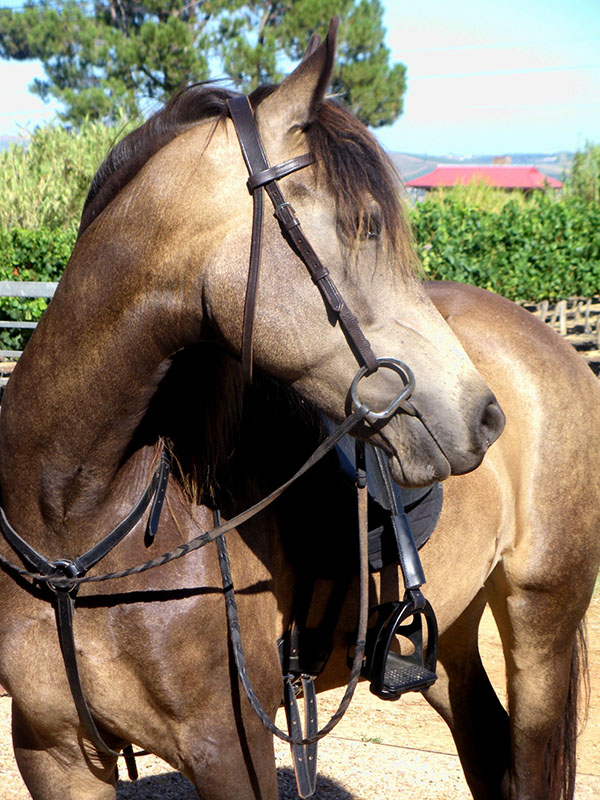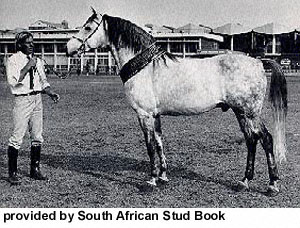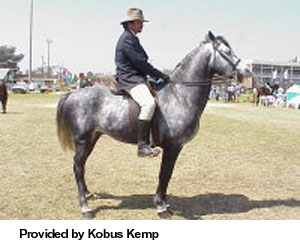Boer Horses
 Also Known By: Boerperd
Also Known By: Boerperd
The history of the Boer horse is as old as the history of the white civilization in Southern Africa. The growth and development of the breed were parallel and inseparably connected to the history of the white settlers.
The breed developed shortly after arrival of Jan van Riebeeck in the Cape in 1652. The history of the Boer horse can be subdivided into three phases, namely:
- Jan van Riebeeck until the Great Trek (1652 - 1836)
- Great Trek to the beginning of the Boer war (1836 - 1899)
- Boer War (1899) to present (1995)
The period from the arrival of Jan van Riebeeck until the Great Trek (1652 - 1836)
The first horses were imported from Java during Van Riebeeck's reign in the Cape. The Dutch East Indian Company sold the first horses to the Free Burghers in 1665.
Due to inbreeding, Persian Arabs were imported and for about 150 years these horses in the Cape were inbred with the Eastern blood. Thus a definite type of horse, which became known as the Cape horse, developed.
 In 1793 Andalusian and Isabella horses arrived in the Cape. It is however unlikely that these horses
had a significant influence on the horse population.
In 1793 Andalusian and Isabella horses arrived in the Cape. It is however unlikely that these horses
had a significant influence on the horse population.
Already between 1750 and 1800 these horses in the Cape were renowned for their endurance and intelligence and were sought after as a military horse. Lord Charles Somerset further improved and stimulated the breeding process by importing thoroughbred stallions. At this stage there were about 200,000 horses in the Cape. In short, it can be said that the Cape horse was established in these 150 years as a specific type and it was worldwide known and sought after as a military horse.
The period from the Great Trek to the beginning of the Boer war (1836 - 1899)
During the first years of the Great Trek the Cape horse remained unchanged. During the latter half of the century various horse breeds were imported into the Cape and the republics, and probably these horses could have had some influence on the Boer horse, but more so in the Cape than in the northern regions. Examples of these horses are Flemish stallions from the Netherlands, Hackneys, Norfolk Trotters, Cleveland Bays etc.
During this period the Basotho under Moshesh raided the Boer and became a mounted nation. Due to the opening of the Suez canal the main sea routes to India changed and horses were no longer exported to India. This resulted in a decline in the horse breeding.
In 1870 a horse-sickness epidemic wiped out many horses. However, above mentioned factors did not have any influence on the horse breeding programs in the republics and breeding of the Boer horse continued.
 The period from the Boer War (1899) to present
The period from the Boer War (1899) to present
The war again proved the stamina, hardiness and mobility of the Boer horse and Basotho Pony. Under difficult conditions they had to live off the veld and thousands of these horses perished. The First World war and the advent of the bakkie also contributed to the fact that the Boer horse on the farm almost disappeared.
The Calvinia breed was developed from the Boer.
References
Mason, I.L. 1996. A World Dictionary of Livestock Breeds, Types and Varieties. Fourth Edition. C.A.B International. 273 pp.
The South African Stud Book and Livestock Improvement Association
